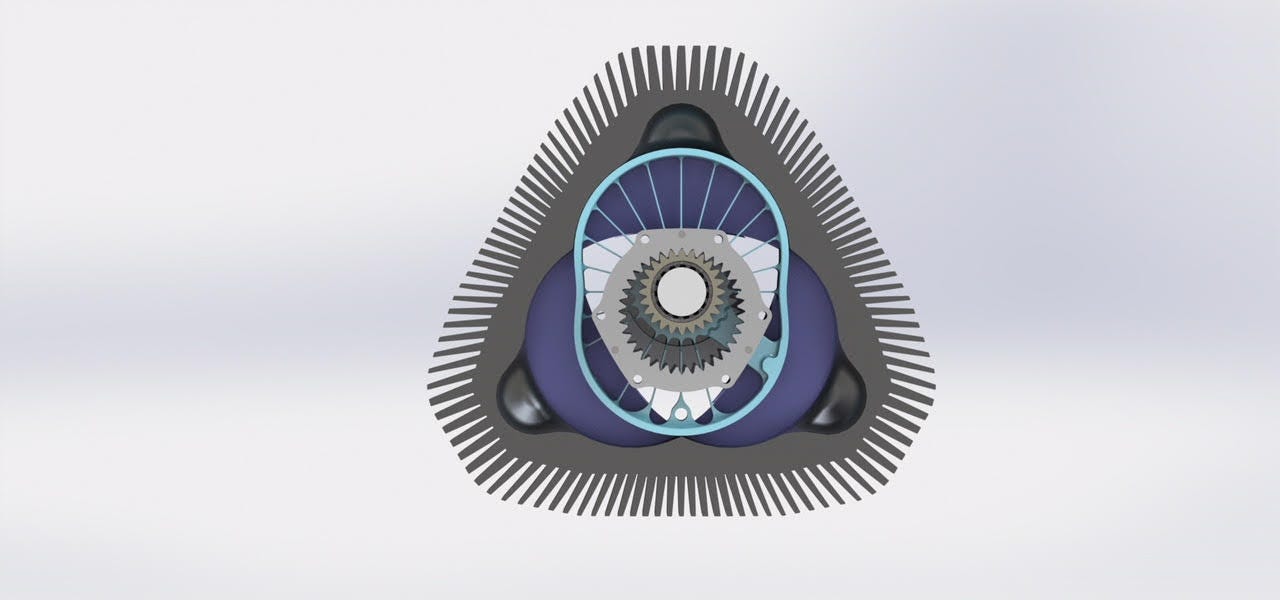Liquid Piston to become beating heart of Air Force flying orb


There's been a lot of development activity around flying vehicles recently, but the Air Force wants a shortcut to an unmanned electric vertical takeoff and landing (eVTOL) concept for urban transport. The secret sauce? Pairing emerging electric vehicle technology with an innovative rotary internal combustion engine to keep batteries charged and extend flight times.
Urban Air Mobility (UAM) is a major focus of technology development among transportation firms, with ambitious projects to put test vehicles in the sky over major urban centers in the U.S. and Europe within the next few years. UAM combines state of the art propulsion and battery technologies with advances in robotics, machine vision, and AI. The result could be a fundamental rethinking of how we navigate in and around cities.
The problem is that electric vehicle technology, while offering advantages like noise reduction, have severe power density limitations compared to combustion engines. It's a classic development conundrum for aeronautical engineers, one that involves weighing imperfect tradeoffs: Gasoline engines are inefficient, diesel engines are big and heavy, and electric power/batteries weigh a lot compared to the energy they produce. These features present significant limitations to range, payload, and efficiency. Nowhere are those limitations more apparent than in UAV, which require close attention be paid to the weight/power tradeoff.
But what about a hybrid approach?
That's the strategy the Air Force seems to be landing on with a Phase I Small Business Technology Transfer (STTR) contract awarded to LiquidPiston, Inc., a developer of an advanced rotary internal combustion engine called the X-Engine. Paired with a generator, the X-Engine can be configured to charge the eVTOL vehicle's battery and keep it charged during flight, significantly extending the range of an electric propulsion system. Alternatively, it can be configured in parallel with an electric drive, using the engine directly to produce thrust or lift.
The new contract is in support of the Air Force's Agility Prime program, which seeks to leverage commercial electric vertical takeoff and landing (eVTOL) and other transformative vertical flight vehicles for government missions in a way that accelerates the emerging commercial market.
"Our work with the Air Force demonstrates the versatility and utility of our X-Engine across the Department of Defense including our ongoing work with the US Army," said Alec Shkolnik, CEO and co-founder of LiquidPiston, referencing an Army contract we covered last year. "Today's solutions for power and energy are held back by a lack of technological innovation ... The X-Engine solves these challenges, and with this contract, we look forward to showcasing the value a hybrid-electric configuration can bring to unmanned flight."
A rotary engine is the ideal platform for just such a hybrid approach. The X-Engine is 10x smaller and lighter than traditional diesel engines and increases efficiency by 30%. It has only two primary moving parts, a shaft and rotor, which limits size and vibration.
We've covered LiquidPiston before, and it's easy to get lost in the weeds on the technology. For instance, the company emphasizes that its rotary engines are not Wankel engines, which until now has been the only commercialized rotary engine design. Wankel engines employ a roughly triangular rotor that is spun during a combustion cycle and forms a seal with the outer case at each of the three points of the triangular rotor. As the rotor spins, those seals are subjected to forces that cause them to wear. LiquidPiston's engine, on the other hand, uses an oval rotor that moves within a triangular housing. The required seals are mounted on the stationary housing and are lubricated directly, increasing wear life and durability.
We'll keep any eye on the Air Force's efforts as part of our ongoing coverage of Urban Air Mobility.